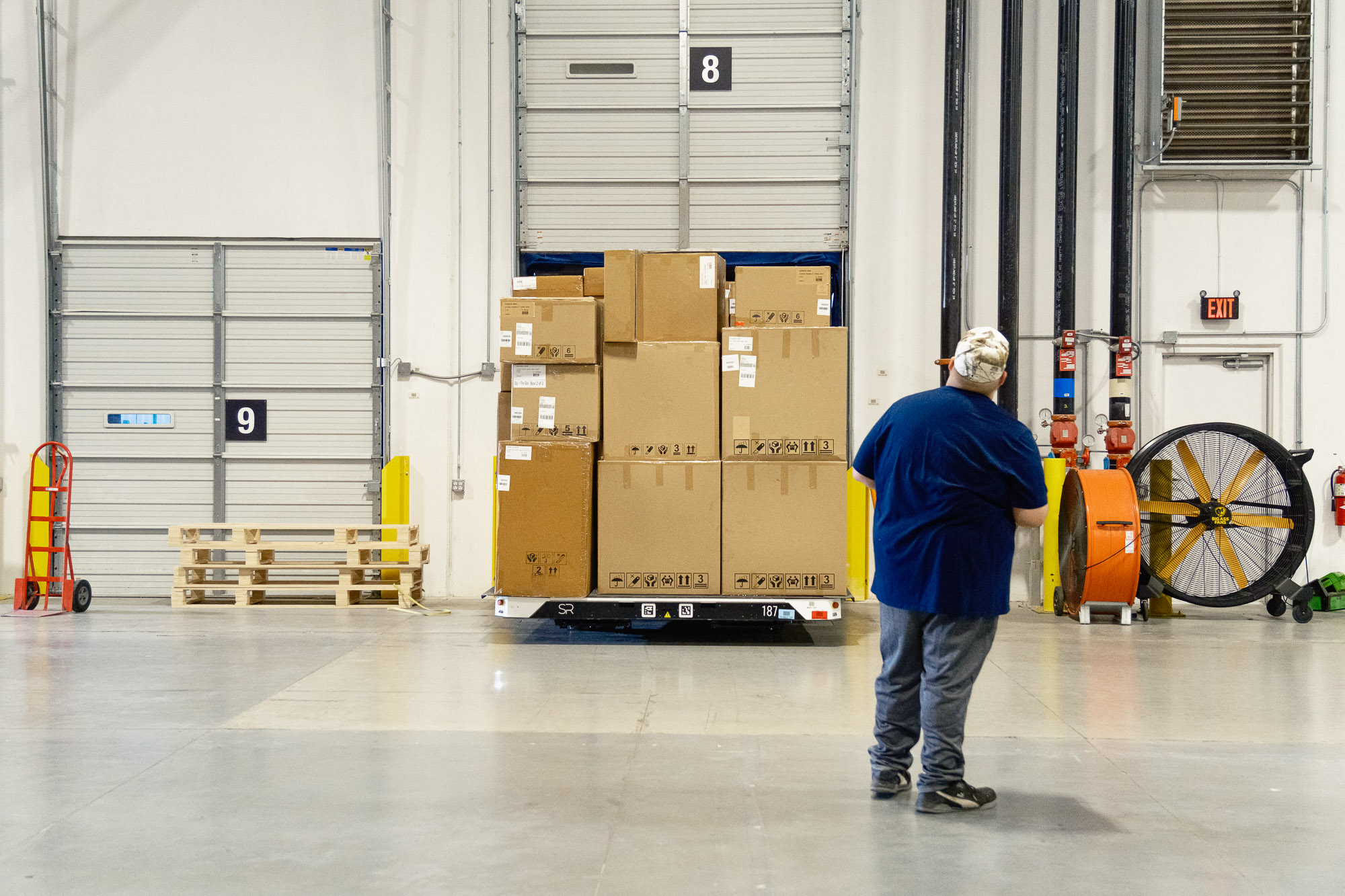The Role of Robotics in Supply Chain Management
July 1, 2024
.jpg)
Supply chains are increasingly under immense pressure to deliver goods faster and more efficiently than ever before. To meet these demands, companies are increasingly turning to robotics to transform how they manage the flow of goods from production to the customer's doorstep.
A Brief History of Industrial Robotics
Industrial robots have been a fixture in manufacturing for decades. Robotics traces back to the early 20th century when the first automated machines revolutionized manufacturing. However, it wasn't until the 1960s that robotics saw widespread adoption with the introduction of Unimate, the first industrial robot. Initially employed for tasks such as welding and assembling in automotive manufacturing Unimate laid the groundwork for today's advanced supply chain robotics.
The Evolution of Supply Chain Robotics
The 21st century has seen rapid advancements in robotics technology, revolutionizing the supply chain industry. Early robots were bulky, expensive, and limited to repetitive tasks in controlled environments. However, modern robotics have become far more sophisticated, with today's robots being smaller, more affordable, and equipped with advanced sensors, artificial intelligence (AI), and machine learning capabilities. These improvements have significantly expanded their applications across various supply chain functions, transforming the efficiency and capabilities of industries worldwide.
Driving Forces Behind Robotics Adoption
The surge in e-commerce has led to a dramatic rise in online orders, each with its own unique fulfillment requirements. Consumers expect fast and reliable deliveries, pushing supply chains to optimize efficiency at every stage.
Labor shortages are another significant driver. Finding and retaining qualified workers for physically demanding warehouse jobs can be challenging. Automation with robots offers a solution, freeing up human employees to focus on higher-level tasks.
Finally, the economic benefits of automation are undeniable. Robots can work tirelessly, reducing labor costs and improving overall throughput. Additionally, they minimize errors and accidents often associated with manual labor, leading to cost savings and a safer work environment.
The Benefits of Robotics in Supply Chain Management
The integration of robotics into supply chain management is transforming the industry, offering numerous benefits that help businesses stay competitive. Here are some key advantages:
- Increased Efficiency: Robots can work around the clock without fatigue, significantly boosting productivity and throughput. Tasks that once took hours can now be completed in minutes, leading to faster order processing and shorter lead times. This constant operational capability ensures a seamless flow of goods, enhancing overall efficiency.
- Cost Reduction: While the initial investment in robotics can be substantial, the long-term savings are considerable. Reduced labor costs, fewer errors, and lower overhead contribute to a higher return on investment. Additionally, robots reduce the need for temporary labor during peak seasons, leading to more predictable operational costs.
- Enhanced Accuracy: Robots are precise and consistent, which minimizes errors in order fulfillment and reduces waste. This level of accuracy improves customer satisfaction and loyalty, as orders are fulfilled correctly and on time. The reduction in errors also means fewer returns and replacements, further cutting costs and increasing profitability.
- Safety Improvements: Robots can take over dangerous tasks, reducing the risk of workplace injuries. This not only protects employees but also lowers costs associated with accidents and insurance. By handling hazardous materials, heavy lifting, and repetitive tasks, robots create a safer working environment, fostering a culture of safety within the organization.
- Scalability: As businesses grow, robotics systems can be scaled up easily. Whether expanding warehouse operations or increasing production capacity, robots provide the flexibility needed to meet rising demands. This scalability ensures that businesses can adapt to market changes quickly, maintaining their competitive edge.
The Human Factor: Collaboration, Not Replacement
A common concern surrounding the rise of robotics is the potential for job displacement. While automation will undoubtedly change the nature of work in supply chains, it's important to understand that robots are not designed to replace human workers entirely.
Robots excel at repetitive tasks and consistent performance, while humans bring critical thinking, problem-solving skills, and the ability to adapt to unforeseen circumstances.
Collaborative robots, commonly known as cobots, represent an exciting advancement in robotics. Unlike traditional industrial robots, cobots are designed to work alongside human workers safely and efficiently. They can be programmed to handle delicate items with precision, assist with complex assembly processes, and provide real-time guidance and support to human operators.
This collaboration enhances productivity, reduces the risk of injury, and allows human workers to focus on more strategic tasks, ultimately leading to a more efficient and harmonious work environment.
The Future of Robotics in Supply Chain
The integration of robotics into supply chain operations has transformed how businesses manage logistics, leading to more streamlined and efficient processes. As technology continues to evolve, the role of robotics in supply chain management will only grow, driving further innovations and improvements across the industry. Businesses that embrace robotics will enhance their efficiency, reduce costs, and stay competitive in a rapidly changing market.
Contact Us Today
If you’re ready to see how Slip Robotics can help transform your supply chain operations, contact us today.












.jpg)




